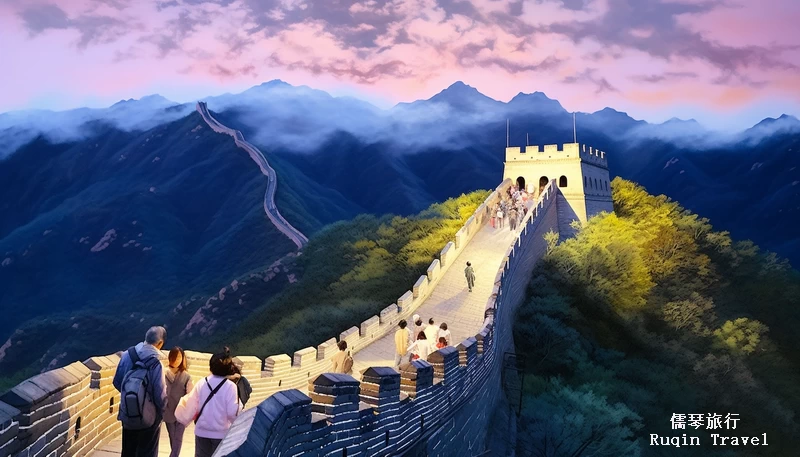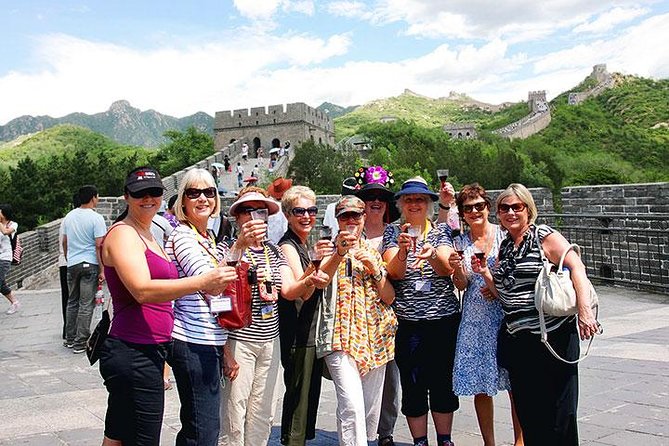20 Free Ideas To Culinary Experiences Across China
Wiki Article
Top 10 Tips For Dealing With copyright Items When Shopping In China
1. Know the most risky items to avoid: Branded goods like watches, bags electronics, electronic gadgets, and designer clothing are the most frequently counterfeited. You should shop for these items with extreme care.
Pro: Helps you concentrate your attention on fake products.
Con: A lack of understanding regarding authentic products can lead to suspicion.
2. The authentic product specifications can be found through research
Shop with a brand you are familiar with. Know the details of their branding, materials, and stitching.
Increases your ability to recognize subtle differences between genuine products and fake ones.
Con: It can be time-consuming for people who aren't familiar with the products.
3. Shop in Trusted Stores
If you're searching for premium products in malls or official brands like Beijing's China World Mall and Shanghai's Plaza 66, then stick to them.
Pro: Assures authenticity of the product and comes with receipts and warranties.
Con: The cost of items may be much higher than those in small stores or markets on the streets.
4. Labels and Check Labels
Look out for incorrect spellings inconsistencies in fonts, and poor quality packaging.
Pro: A fast and simple way to identify poorly made counterfeits.
False goods that are of high-quality can closely appear like genuine items, which can make it difficult to distinguish.
5. Beware "Too Good to be True Prices"
Tip: Prices that are extremely low for items that are considered luxury are an indication of a problem. The most expensive luxury items are not often offered at prices lower than retail.
Pro: Helps you avoid obvious scams.
Con: Some sellers moderately price fakes in order to give them a more convincing appearance.
6. Ask for Certificates of Authenticity
Tip: Request authentic documents for items like antiques, jade and other branded products.
Pro: Increases confidence when buying.
Con: Because certificates can also be forged this method isn't foolproof.
7. Test before Buying
Make sure you test the electronics and other products that are high-value before you buy them.
Pro: Helps confirm that the device is functional and of high-quality.
Con: Sellers may not allow testing. Tests could be limited to only superficial functions.
8. Do not buy antiques without the guidance of an expert.
Tips: To ensure that an antique is authentic It must be verified by an expert or requires extensive investigation. Avoid them unless their authenticity is confirmed.
The benefit is that you will not get fooled by a copy or copyright.
Con: If you don't check around, you may miss out aesthetically pleasing or even authentic ornamental pieces.
9. Utilize an Local Guide that You Can Trust
Tips An experienced local guide or friend familiar with the market can help determine reputable vendors and recognize fakes.
Pro: Saves time and reduces risks when shopping in untested markets.
Cons: Guides may be expecting a commission or gratuity which will increase your expenses.
10. Trust Your Instincts
It is best to leave an item if it doesn't feel right. It could be due to the customer's attitude, or the quality of the item, the price, etc.
Pro: It protects you from regrettable purchases.
Cons: Being overly cautious could lead you to miss good deals.
Benefits of avoiding fake products
Durability - Genuine products are more durable and last for longer. They are also more economical.
Peace of Mind: There is no reason to be worried about being deceived or cheated.
Legal Security: Certain countries penalize travelers for bringing back copyright goods.
Supporting genuine products can aid in maintaining moral business procedures.
Pros and Cons of avoiding copyright products
Authentic products are usually more expensive.
Limitations on availability The original item may not always be accessible on the streets or in smaller shops.
The counterfeits can be high-quality and can be a bargain.
These tips will help you to navigate your shopping experience in China without fear and to make an educated choice about whether or not you want to buy authentic items. Read the top rated read more about this incredible site for site examples including lijiang tour maps, binhai aircraft copyright theme park in tianjin, great tang all day mall xian.html, basha miao village, popular beijing night markets, snow beer the best selling beer in the world, honey lake country club, hohhot transportation, datong beijing high speed railway schedule and timetable, the origin and history of the mysterious chinese dragon and more.

Top 10 Tips For The Best Time To Visit Famous Temples In China
1. Visit During the Off-Season (Autumn/Winter)Tip Think about visiting famous temples in China in the off-season (autumn or winter), typically between November and February. This is the time when there are fewer visitors and the weather is cooler.
Pro The experience is more packed and more contemplative.
Pros: The weather can be colder which can make temple visits outdoors uncomfortable.
2. Prepare for extreme weather
Tips: Temperatures in various seasons can vary greatly. Winters may be bitterly cold, while summers can be hot. Dress according to the forecast for the weather.
Pro: Prepare yourself for any weather conditions, and enjoy your journey in peace.
Cons: It can be difficult to pack to deal with extreme weather, especially when you are traveling in a small amount.
3. Visits during the spring and summer for lively Flora
Visit temples during spring or the summer months to admire gorgeous gardens and flowering plants. It is also possible to enjoy lush landscapes surrounding temples.
Beautiful scenery enhances the experience of visiting temple grounds.
Con summers can be very hot and crowded at holidays, particularly national ones.
4. Take into consideration festivals and special events.
Tip: Plan your visit during traditional celebrations like Chinese New Year (January/February) or the Mid-Autumn Festival (September). These festivals allow you to take part in rituals, ceremonies and experience the vibrant traditions of the temple.
Pro: The temples typically hold lively traditional events and provide an the most unique, thrilling experience.
Con: Temples can be extremely crowded. Also, accommodation prices can be high during festivals.
5. Avoid Peak Holiday Seasons
Avoid visiting during peak tourist season (e.g. Chinese New Year or Golden Week in October) as temples can be crowded both with international and local tourists.
Pro: More peaceful visits without the crowds, offering a more spiritual experience.
Con: You might miss out on some special festival events when they are at their peak.
6. Be aware of Temple Closures during Winter
A tip: Some temples could have limited hours or closed during the colder winter months, especially in remote areas or northern regions. Always check ahead of time.
Benefits: Reduces the need for unnecessary trips and lets you schedule other events in advance.
Cons: There could be a cut in operating hours or temples completely closed during renovations.
7. Early Morning Visits to the Beach in the summertime
If you're visiting in the summer months, make sure to arrive early so that you can stay away from the heat of midday. Temples in many cities are open in the early morning, when there are fewer people and there is less heat.
Pro: A cooler and quieter experience with fewer crowds.
Con: It requires an early morning, which may not be a good fit for all.
8. Be prepared for rain during the summer
It can be very rainy during summer, especially in the southern part of China. If you are planning to visit during this time bring an umbrella or rain gear so you can stay dry.
Pros: Even in the rain, you can still enjoy the beautiful temple.
Cons: Rain could cause outdoor activities to be disrupted, and temple grounds to become slippery.
9. Visit temples in the mountains during autumn
Tips: The fall leaves provide a gorgeous backdrop to temples located in mountainous areas (e.g. Mount Wutai and Mount Emei), as it is a time when the weather is pleasant.
Pros: The cooler temperature make outdoor activities and hiking more pleasant, and the mountain views are spectacular.
Con: The popular mountain temples can still attract crowds particularly on weekends and holidays.
10. Examine the Lunar Calendar in Specific Cases
Tips: Many temples adhere to the lunar calendar in China Some ceremonies or events are linked to certain dates. It is crucial to verify the calendar in order to be able attend major occasions, like the Lantern Festival, Buddha’s Birthday or other temple celebrations.
Pro: Unique cultural experience and deeper insight into local rituals of the spiritual.
Cons: Researching and planning your excursion around the lunar calendar could take longer and you could discover that the lunar calendar does not coincide with your travel dates.
The advantages of a seasonally scheduled trip to Chinese temples
Fewer Crowds - Off-season trips are quieter and more reflective.
Festivals are a great way to immerse yourself in the cultural and religious traditions of your region.
Beautiful scenic beauty: Visits during the fall or spring months can offer stunning scenery with lively gardens surrounding temples.
Exploring the Tempel is more enjoyable in the autumn and winter months.
Pros and cons of visiting Chinese temples in the season
Unpredictable Weather: Winter can be cold and summer could be hot. Both of these conditions can affect your well-being.
Temple Closures: Some temples are restricted in hours of operation or are shut during extreme weather conditions or during off-season.
At popular festivals can bring large numbers of people, making it difficult to fully appreciate the temple’s peaceful atmosphere.
Limited Activities - Some events and ceremonies are only scheduled during specific seasons.
Select the appropriate time of year to visit China's most famous temples and plan accordingly. This will ensure that you'll have an unforgettable experience. Understanding the seasonal dynamics of the temples will allow you to maximize your time there, whether you're seeking peace or cultural celebrations. Follow the most popular plan your journey to this landmark for more examples including datong beijing high speed railway schedule and timetable, shopping in fuzhou, chinese wood carving originated in neolithic period, shopping in xi an, kashgar tour maps, eating in changchun, wang zhaojun one of the four beauties in ancient china, taishan tour maps, eating in dunhuang, guanlin temple and more.
